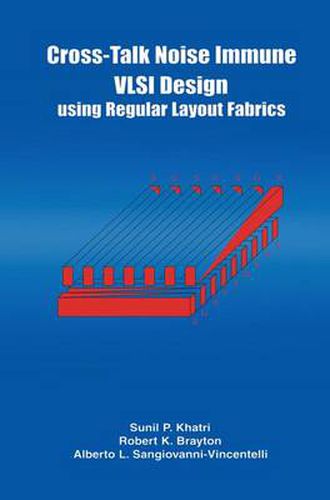Readings Newsletter
Become a Readings Member to make your shopping experience even easier.
Sign in or sign up for free!
You’re not far away from qualifying for FREE standard shipping within Australia
You’ve qualified for FREE standard shipping within Australia
The cart is loading…






This title is printed to order. This book may have been self-published. If so, we cannot guarantee the quality of the content. In the main most books will have gone through the editing process however some may not. We therefore suggest that you be aware of this before ordering this book. If in doubt check either the author or publisher’s details as we are unable to accept any returns unless they are faulty. Please contact us if you have any questions.
This book was motivated by the problems being faced with shrinking IC process feature sizes. It is well known that as process feature sizes shrink, a host of electrical problems like cross-talk, electromigration, self-heat, etc. are becoming important. Cross-talk is one of the major problems since it results in unpredictable design behavior. In particular, it can result in significant delay variation or signal integrity problems in a wire, depending on the state of its neighboring wires. Typical approaches to tackle the cross-talk problem attempt to fix the problem once it is created. In our approach, we ensure that cross-talk is eliminated by design. The work described in this book attempts to take an outside-the-box view and propose a radically different design style. This design style first imposes a fixed layout pattern (or fabric) on the integrated circuit, and then embeds the circuit being implemented into this fabric. The fabric is chosen carefully in order to eliminate the cross-talk problem being faced in modem IC processes. With our choice of fabric, cross-talk between adjacent wires on an IC is reduced by between one and two orders of magnitude. In this way, the fabric concept eliminates cross-talk up-front, and by design. We propose two separate design flows, each of which uses the fabric concept to implement logic. The first flow uses fabric-compliant standard cells as an im plementation vehicle. We call these cells fabric cells, and they have the same logic functionality as existing standard cells with which they are compared.
$9.00 standard shipping within Australia
FREE standard shipping within Australia for orders over $100.00
Express & International shipping calculated at checkout
Stock availability can be subject to change without notice. We recommend calling the shop or contacting our online team to check availability of low stock items. Please see our Shopping Online page for more details.
This title is printed to order. This book may have been self-published. If so, we cannot guarantee the quality of the content. In the main most books will have gone through the editing process however some may not. We therefore suggest that you be aware of this before ordering this book. If in doubt check either the author or publisher’s details as we are unable to accept any returns unless they are faulty. Please contact us if you have any questions.
This book was motivated by the problems being faced with shrinking IC process feature sizes. It is well known that as process feature sizes shrink, a host of electrical problems like cross-talk, electromigration, self-heat, etc. are becoming important. Cross-talk is one of the major problems since it results in unpredictable design behavior. In particular, it can result in significant delay variation or signal integrity problems in a wire, depending on the state of its neighboring wires. Typical approaches to tackle the cross-talk problem attempt to fix the problem once it is created. In our approach, we ensure that cross-talk is eliminated by design. The work described in this book attempts to take an outside-the-box view and propose a radically different design style. This design style first imposes a fixed layout pattern (or fabric) on the integrated circuit, and then embeds the circuit being implemented into this fabric. The fabric is chosen carefully in order to eliminate the cross-talk problem being faced in modem IC processes. With our choice of fabric, cross-talk between adjacent wires on an IC is reduced by between one and two orders of magnitude. In this way, the fabric concept eliminates cross-talk up-front, and by design. We propose two separate design flows, each of which uses the fabric concept to implement logic. The first flow uses fabric-compliant standard cells as an im plementation vehicle. We call these cells fabric cells, and they have the same logic functionality as existing standard cells with which they are compared.